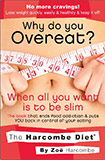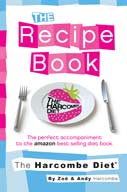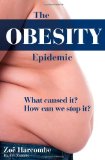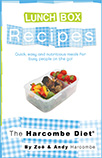Candida is a yeast, which lives in all of us, and is normally kept under control by our immune system and other bacteria in our body. It usually lives in the digestive system. Candida has no useful purpose. If it stays quiet and in balance, it causes no harm. If Candida multiplies out of control, it can create havoc with our health and well-being.[Reference i]
Early Literature
While researching to try to understand why people who were so desperate to lose weight were craving and consuming quite specific foods in excess, Zoë came across many publications about three conditions: Candida, Food Intolerance and Hypoglycaemia.
The works that Zoë researched were about these separate conditions and the numerous symptoms with which they were associated. Zoë noticed that the doctors, expert in each of these conditions, wrote in their literature about food cravings and eating disorders, but that the authors didn’t develop the implications for this. Zoë did.
Here are some examples of the passages that Zoë discovered during her research into Candida, where doctors detailed their patient case notes:
“Every night, at approximately 2am, Dr Jones dragged himself from bed, pulled on a pair of slacks over his pyjamas, and sped to an all-night grocery store. Roaming the aisles like a madman, he threw éclairs, pickles, smoked fish, and ice-cream into the cart. Unable to wait to feast at the kitchen table, he spread the items on the car seat, tore into a couple of wrappers, and began an engorgement that would end when the food did.
Candida overgrowth brings a craving for most of these forbidden (on the anti-Candida diet) foods – not just a preference but a strong virtually insatiable craving. People report dragging themselves out of bed at 2am to go to the all-night grocery.”
Shirley S Lorenzani Candida – a Twentieth Century Disease.
Another seminal book about Candida called The Yeast Syndrome is by John Parks Trowbridge and Morton Walker. There is a passage in this book about one of their patients:
“For a long time the woman had suffered with anorexia and bulimia. She dropped from 170 to 140 pounds… her menstrual flow stopped completely when food bingeing alternating with forced vomiting brought her weight down to 115 pounds… constant fatigue and addictive food cravings were additional troubles for Mrs. Bennett…Mrs. Bennett described several weeks of intense sugar cravings that had caused her to gobble down many refined carbohydrates – candy, cake, bread… ”
Medical Journals
Zoë is not aware of anyone who has researched these conditions and connected them in the way that she has – certainly not in the 1990s as she did. Research into each individual condition and their impact on eating is becoming more prevalent. Here are just three journal articles about Candida where “cravings”, “ravenous appetite for sweets”, “bulimia”, “obesity and unhealthy eating” and “addiction to carbohydrates” are documented:
“Patients with unspecific symptoms were sometimes tested for Candida. In case of findings of this yeast-like fungus in their stools they often were labelled with the diagnosis of a ‘Candida-syndrome’. This comprises headache, weakness, flatulence, ravenous appetite for sweets, itching skin and several more unspecific symptoms.” [ii]
“The bulimic patient, on the other hand, binges on carbohydrates. She may be absorbing only sugar, altering sugar metabolism and creating hyper- or hypoglycemia. Elevations of brain serotonin levels produced by carbohydrate binges temporarily counter anxiety. The bulimic patient may become allergic (addicted) to the foods, especially carbohydrates. Candida albicans, which feeds on carbohydrates, ruins the immune system and perpetuates the bulimic problem.”[iii]
“Microbes in the gastrointestinal tract are under selective pressure to manipulate host eating behavior to increase their fitness, sometimes at the expense of host fitness. Microbes may do this through two potential strategies: (i) generating cravings for foods that they specialize on or foods that suppress their competitors, or (ii) inducing dysphoria until we eat foods that enhance their fitness. We review several potential mechanisms for microbial control over eating behavior including microbial influence on reward and satiety pathways, production of toxins that alter mood, changes to receptors including taste receptors, and hijacking of the vagus nerve, the neural axis between the gut and the brain.
We also review the evidence for alternative explanations for cravings and unhealthy eating behavior. Because microbiota are easily manipulatable by prebiotics, probiotics, antibiotics, fecal transplants, and dietary changes, altering our microbiota offers a tractable approach to otherwise intractable problems of obesity and unhealthy eating.” [iv]
More Information
Stop Counting Calories & Start Losing Weight and/or Why Do You Overeat? When all you want is to be slim will explain: What is Candida? What causes Candida overgrowth? How do you know if you have Candida overgrowth? What is the connection between Candida and food cravings? How can you treat Candida?
Download Questionnaire on causes of Candida
Download Questionnaire on symptoms of Candida
For more information, take a look at this short video:
Further reading
“Candida – a 20th Century Disease” by Shirley Lorenzani (1986)
“The Yeast Syndrome” by John Parks Trowbridge MD and Morton Walker D.P.M (1986)
Candida Albicans – Could Yeast be your problem?” by Leon Chaitow (1987)
“The Yeast Connection” by William G. Crook MD (1983)
“The Complete Candida Yeast Guidebook” by Martin and Rona (2000)
“Beat Candida through diet” by Gill Jacobs (1990)
References









Interesting information, Zoe, and helpful, as I’m studying for a diploma in Eating Disorders.
One to add to your list of books on the subject: An Extraordinary Power to Heal by Dr Bruce Semon. He has a rather idiosyncratic way of writing, but the information is helpful.